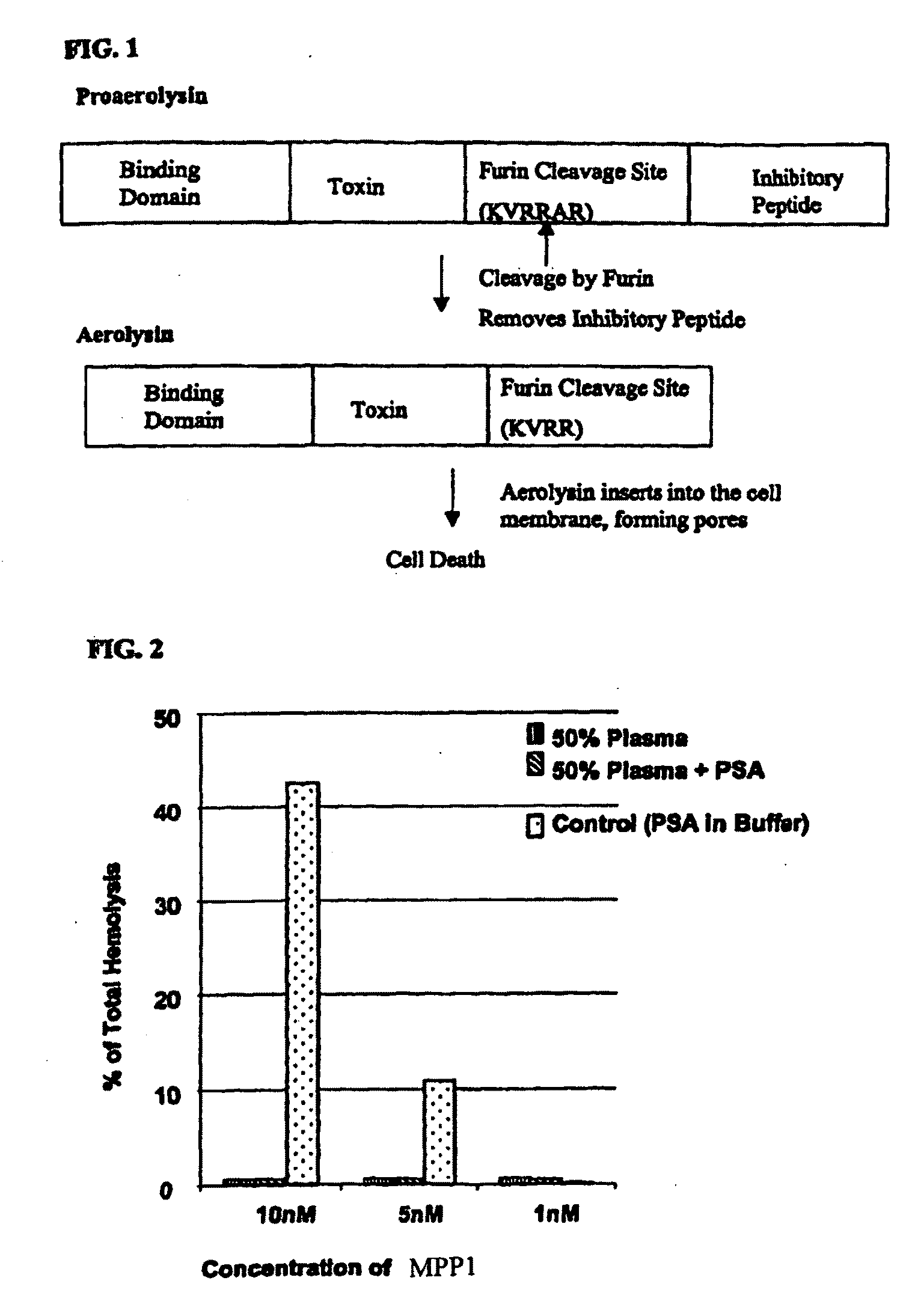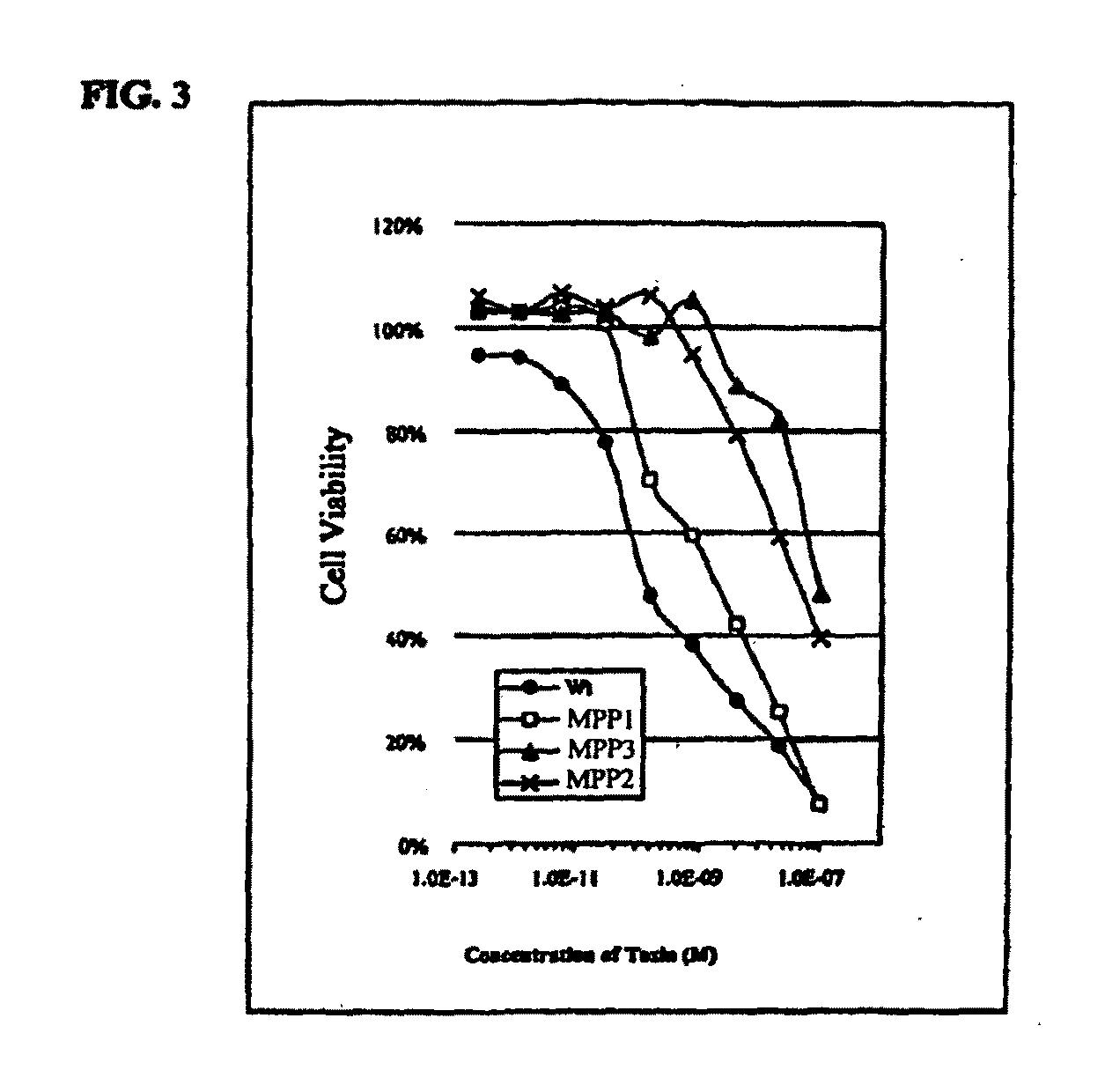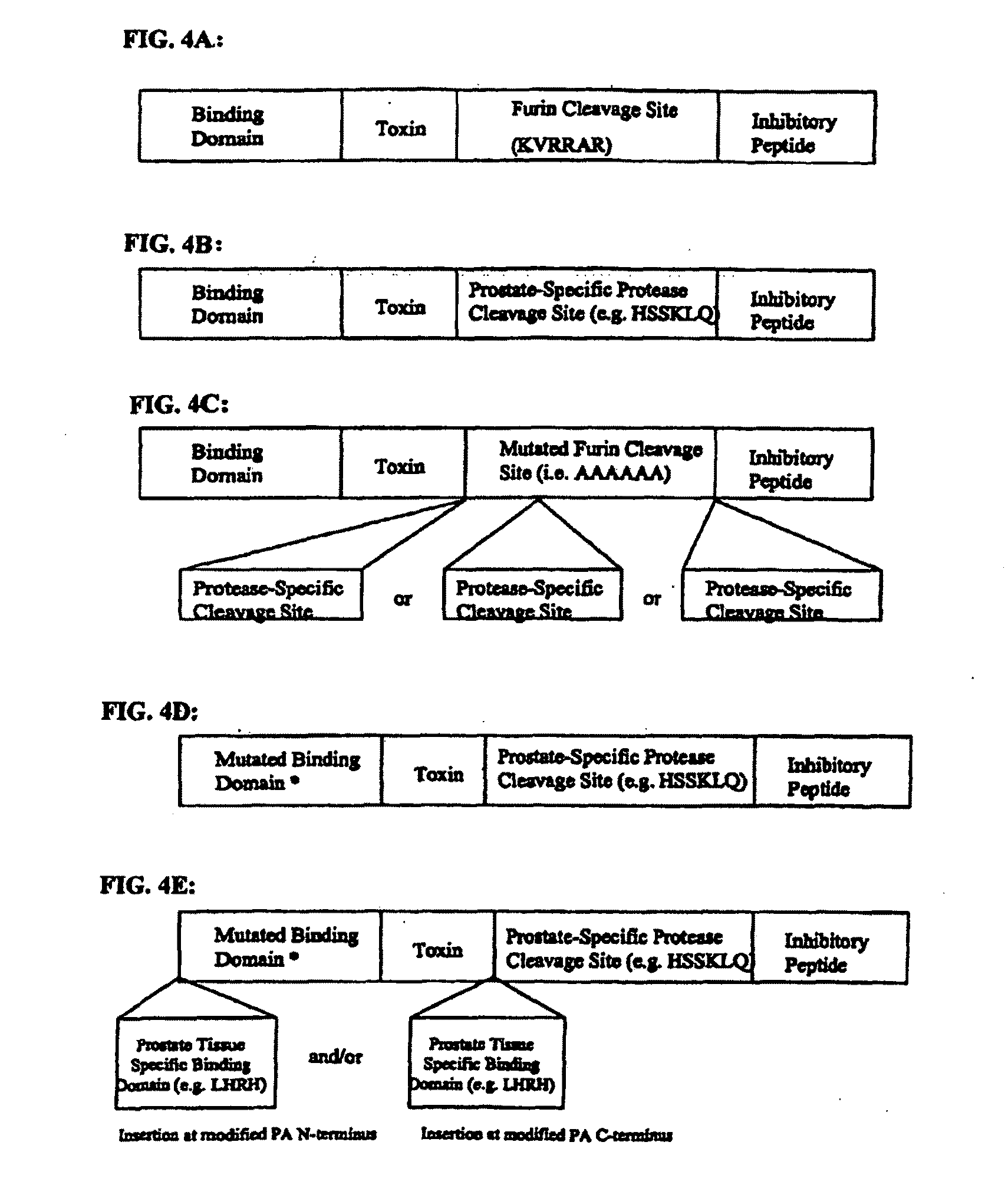Method of treating or preventing benign prostatic hyperplasia using modified pore-forming proteins
a technology of prostatic hyperplasia and modified pore-forming proteins, which is applied in the direction of peptide/protein ingredients, antibody medical ingredients, peptide sources, etc., can solve the problems of urinary tract infections, cell membrane death, and all-in-one cell death, and achieve the effect of decreasing the prostate siz
- Summary
- Abstract
- Description
- Claims
- Application Information
AI Technical Summary
Benefits of technology
Problems solved by technology
Method used
Image
Examples
example 1
Generation of MPPS Activated by PSA
[0265]This example describes methods used to produce the MPPs according to embodiments of the invention as shown in Table 6, which are activated by PSA. These MPPs are derived from proaerolysin. One skilled in the art will understand that similar methods can be used to produce other MPPs which are activated by PSA or any other prostate-specific protease. Such proteins can be produced by substituting the furin sequence of proaerolysin with a prostate-specific protease cleavage site, such as a PSA-specific cleavage sequence.
TABLE 6Comparison of MPPs with an activationsequence containing a protease cleavagesite cleaved by PSA with wild-type ProaerolysinComparison to wt ProaerolysinMPPChange(s) madeADSKVRRARSVDGAGQGLRLEIPLD(SEQ ID NO.)(SEQ ID NO.)(aa 424-448 of SEQ ID NO: 2)MPP1KVRRAR (aa 427-432 ofADSHSSKLQSVDGAGQGLRLEIPLD)(3 & 4)SEQ ID NO: 2) changed to(aa 424-448 of SEQ ID NO: 4)HSSKLQ (5)MPP2KVRRARSV (aa 427-434 ofADSHSSKLQSADGAGQGRLEIPLD(6 & 7)SEQ...
example 2
MPP1 Specifically LYSES PSA-Producing Cells In Vitro
[0273]This example describes methods used to determine the specificity of the MPPs according to embodiments of the invention as described in Example 1. Such methods can be used to test the specificity of MPPs that include a PSA-specific cleavage site.
[0274]MPP1 was tested against PSA-producing LNCaP cells (American Type Culture Collection, Manassas, Va.) and non-PSA-producing TSU cells (Dr. T. Itzumi, Teikyo University, Japan). Cells were incubated in the presence of 10−12 M to 10−6 M MPP1 for 24 hours. Subsequently, cells were counted and scored for percent viable cells based on ability to exclude Trypan Blue. Concentration required to kill 50% of cells (IC50) was determined for MPP1 against both LNCaP and TSU lines.
[0275]The LD50 for MPP1 against PSA-producing cells was 10−10 M. In contrast, against non-PSA producing TSU cells the LD50 was about 5×10−8 M. This result demonstrates that MPP1 is specifically activated by PSA as evid...
example 3
MPP1 is not Activated in Blood Containing PSA
[0276]MPPs which include a PSA cleavage site should not be activated in blood, because PSA is enzymatically inactivated in the blood due to the presence of a large molar excess of serum protease inhibitors such as alpha-1-antichymotrypsin and alpha-2-macroglobulin.
[0277]To test for non-specific activation of MPP1 by other serum proteases and PSA in human serum, a sensitive hemolysis assay was performed as follows. Red blood cells (RBCs, 2% v / v) were added to plasma or buffer containing MPP1±PSA. The extent of hemolysis was assayed by measuring release of hemoglobin into the supernatant. Addition of 0.1% Triton results in 100% hemolysis within a few seconds and was used as the positive control. Amount of hydrolysis was expressed as a ratio of sample absorbance at 540 nm to absorbance of Triton treated sample. Pre-incubation of the MPP1 (10−8 M) with PSA in aqueous buffer alone for 1 hour prior to adding RBCs resulted in about 45% hemolysis...
PUM
| Property | Measurement | Unit |
|---|---|---|
| concentration | aaaaa | aaaaa |
| concentration | aaaaa | aaaaa |
| concentration | aaaaa | aaaaa |
Abstract
Description
Claims
Application Information
 Login to View More
Login to View More - R&D
- Intellectual Property
- Life Sciences
- Materials
- Tech Scout
- Unparalleled Data Quality
- Higher Quality Content
- 60% Fewer Hallucinations
Browse by: Latest US Patents, China's latest patents, Technical Efficacy Thesaurus, Application Domain, Technology Topic, Popular Technical Reports.
© 2025 PatSnap. All rights reserved.Legal|Privacy policy|Modern Slavery Act Transparency Statement|Sitemap|About US| Contact US: help@patsnap.com



